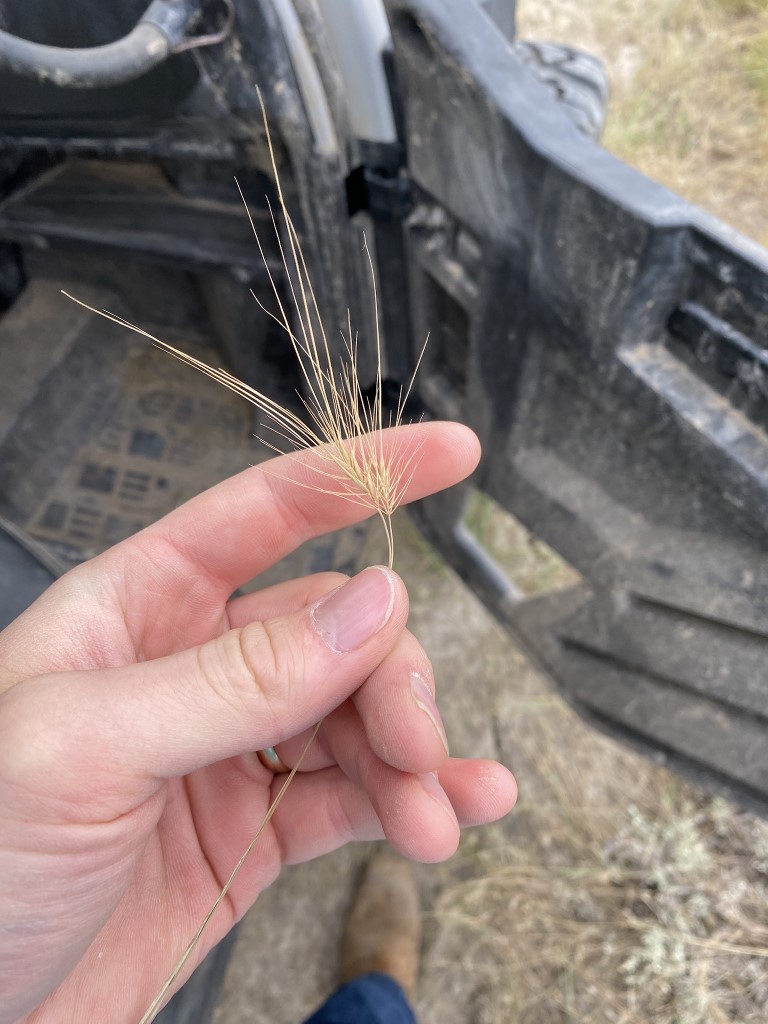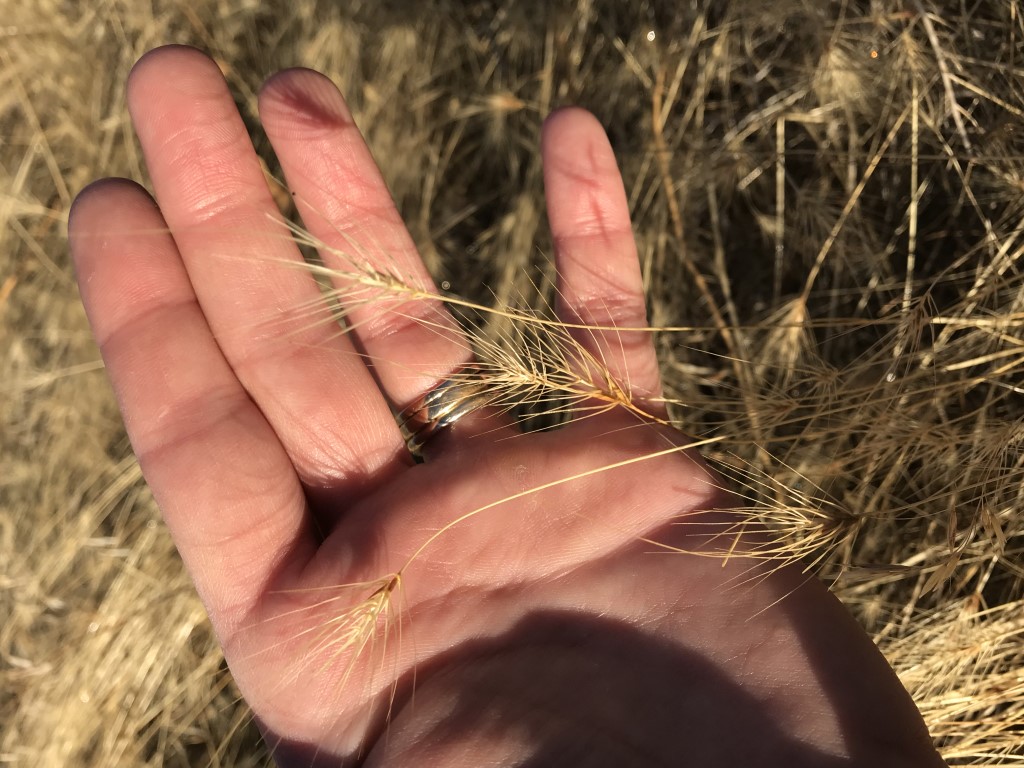
Medusahead Rye

Description
Medusahead rye is a winter annual grass in the Poaceae family. Seeds may germinate in early spring or late fall. It produces slender, 6 to 24 inch long, stems with several usually arising from the base. It produces tillers, or new shoots, but does not produce many leaves. Leaves that are present are narrow (⅛ inches wide) and rolled. Leaves may have short, soft hairs. Auricles are usually present but small (0.5 mm long). Medusahead rye flowers from late-spring to mid-summer. Inflorescences are distinct. Each stem produces a spike inflorescence with 1 to 3 inch long awns that are stiff and have small barbs. These awns twist as the plant matures. The entire seedhead may be 1 to 4 inches wide and tall. Seeds are narrow and ⅛ to ¼ inches long. Seeds are viable for about 2 years. Medusahead rye has a shallow, fibrous root system.
Medusahead rye plants contain high amounts of silica which slows the decomposition of the dead plant material and creates dense patches of thatch or duff.
Origin and Spread
Medusahead rye is native to the Mediterranean regions of Eurasia and Northern Africa. It was introduced to North America in the 1880s as a seed contaminant. This species is not currently found in Teton County. It is found in rangeland in other areas of the West.
.png)
Management Options
Prevention strategies and cultural control strategies should be utilized as much as possible. Use weed free forage and gravel, and clean construction equipment before moving to a new location. Clean recreational gear, clothing, and pets after recreating to prevent spreading this and other species to new areas.
There are not currently any biological control agents available for medusahead rye.
Hand pulling of small infestations of medusahead rye, prior to seed maturation, is highly effective. Shallow cultivation including tilling or hoeing is also effective if conducted immediately after germination and prior to flower production. Mowing is only recommended prior to production of inflorescence. Grazing is also not frequently effective and should be avoided once inflorescences have been produced to prevent damage from the stiff awns.
Large infestations can be controlled with herbicides. With the exception of glyphosate, herbicides should be applied preemergence to prevent germination. Glyphosate is only effective on cheatgrass prior to seed production. Application timing for preemergent herbicides varies based on moisture or rainfall requirements, but most can be applied in August. Read the label before using any herbicide and for application timing details. Contact TCWP if you have any questions about application rates or how to use an herbicide.
Additional Resources
- Weed Report: Medusahead (2013) Ditomaso, J.M., Kyser, G.B., et al. Weed Control in Natural Areas in the Western United States. Weed Research and Information Center. University of California.
- Medusahead: Rangeland, pasture, and riparian site recommendations. (2015) Colorado Department of Agriculture.
- Medusahead Management Guide for the Western States (2014) Kyser, G.B., DiTomaso, J.M., Davies, K.W., Davy, J.S., Smith, B.S. Weed Research and Information Center. University of California
- Medusahead. Washington State Noxious Weed Control Board.



